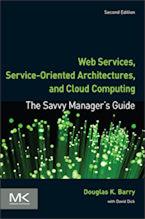Object-Relational Database Articles and Products
Object-relational database management systems span object and relational technology. Most products adhere to the SQL:1999 standard, but some provide a proprietary approach. This site provides articles and a product listing for object-relational databases.
Why "Object-Relational?"
Essentially, the SQL:1999 object model has all the same features as the object model used by object database management systems (ODBMSs), but in a way different from most ODBMSs. This was caused by the mandate that SQL:1999 be backward compatible to SQL-92. That mandate required adapting the SQL:1999 object model to the SQL-92 relational model. As a result, the SQL:1999 object model does not match the object model used by object programming languages. The term object-oriented cannot be used to describe this model because that would imply that the database models match object programming models. Instead, the term object-relational is used.
SQL:1999 expands the data complexity and performance capability of relational databases with the object structures that were added. Nevertheless, more complex structures that can be used by an object programming language will result in impedance mismatch and require mapping. The mapping, however, is not as complicated as it is for SQL-92 RDBMSs. The data mapping is needed to move data from a database to an object programming language (or an application server using an object programming language) and additional mapping to move the data back to the database. (ODBMSs that use the same object model as object programming languages do not need this type of mapping.) More information on mapping and impedance mismatch can be found in the articles mentioned in the next section.
![]()
A common initialism used for an object- relational database management systems is ORDBMS.
Articles
Object-relational databases blend relational and object technology. Related topics at this site include:
Jump-Start Your Development
Our services are a way to get your project off to a running start. We will significantly speed up your development by providing:
- Consulting on software architectures and products. This will help you quickly make fully informed decisions concerning the selection and use of software products for Web Services and service-oriented architectures. More...
- Mentoring or coaching on technical issues. These sessions make it easier for managers and project leads to get up-to-speed on architectural considerations. More...
- Speaking on topics of advanced software architectures and how such architectures can be used in organizations. This is a great way to communicate the value of using various types of software architectures to larger groups. More...
The Savvy Manager's Guide
Douglas K Barry is also the author of a book that explains Web Services, service-oriented architecture, and Cloud Computing in an easy-to-understand, non-technical manner.
Web Services, Service-Oriented Architectures, and Cloud Computing: The Savvy Manager's Guide (Second Edition)
by Douglas K Barry with David Dick
This is a guide for the savvy manager who wants to capitalize on the wave of change that is occurring with Web Services, service-oriented architecture, and—more recently—Cloud Computing. The changes wrought by these technologies will require both a basic grasp of the technologies and an effective way to deal with how these changes will affect the people who build and use the systems in our organizations. This book covers both issues. Managers at all levels of all organizations must be aware of both the changes that we are now seeing and ways to deal with issues created by those changes.


